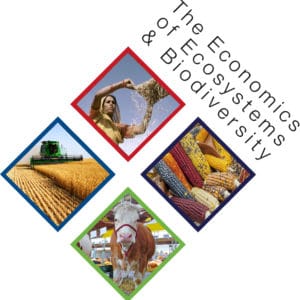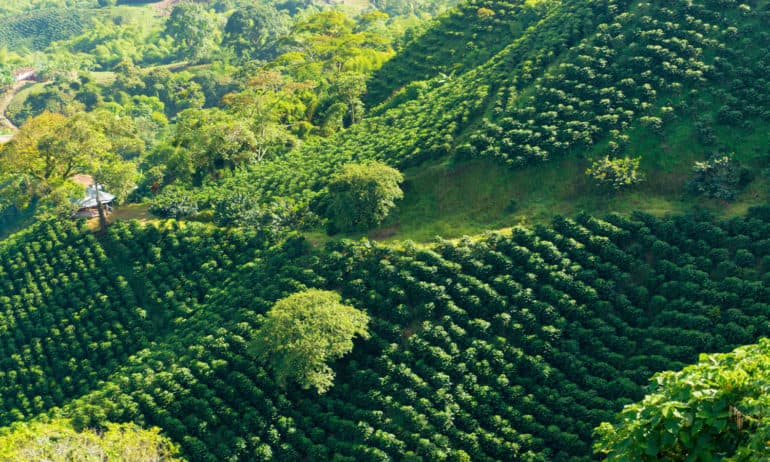Kavita Sharma is an environmental manager for the U.N. Environment Program Economics of Ecosystems and Biodiversity Office (UNEP TEEB). She coordinates and provides support on the implementation of TEEB and is a chapter author of the new (TEEBAgriFood) report, which evaluates agriculture and food systems while considering a range of social, human, and environmental dimensions across the value chain.

Sharma obtained a master’s degree in environmental management from the Yale School of Forestry and Environmental Studies and worked for PricewaterhouseCoopers (PwC) India developing systems for improving delivery of health, education, social security, and information. Sharma also holds a master’s degree in public policy and is currently coordinating and providing technical inputs on implementing UNEP TEEB.
Kavita Sharma sat down with Food Tank to discuss TEEBAgriFood’s Framework and moving towards a comprehensive evaluation of eco-agri-food systems.
Food Tank (FT): What is the most interesting thing you learned from working with TEEBAgriFood?
Kavita Sharma (KS): As we were drafting the framework, we brought together literature from several disciplines – agricultural science, policy, environment and so on, and it was interesting to see the differences in these approaches. However, what was most interesting was the difference between national accountants and economists. They are very different in terms of how they conceptualize transactions. Economists often use hypothetical welfare-based approaches to estimate ecosystem services; the accountants prefer approaches that capture real transactions. As the framework includes ecosystem services and several economically invisible impacts, it brought forward the possible measurement challenges and the differences between the two approaches.
FT: How is the TEEBAgriFood evaluation different from other methods?
KS: The framework is not so much a method, but an honest framing of agriculture and food. What makes it different is that it emphasizes the various dimensions of food systems. Currently, a lot of what we talk about in agriculture revolves around yields, productivity, and other items that can be defined in economic terms. But the framework puts social, human, and environmental dimensions on the same platform as economic ones. A lot of assessments only look at one or the other. To get an honest assessment of the food system, one must consider social, human, environmental, and economic factors as they are all instrumental to our well-being.
FT: Why look at our eco-agri-food system in its entirety—the systems approach—instead of just deconstructing it to focus on specific issues?
KS: You can miss a lot of detail if you only look at a part of the system and not the system in its entirety. Looking at parts can be useful, but if you only look at the social, economic, human, and environmental impacts from the farm level, you miss those impacts beyond the farm. And we know what happens on the farm is not limited to the farm. When you use groundwater, you are taking it out of the table that extends beyond the farm. When you release pollutants or apply pesticides or nutrients on your farm, there will be runoff that spreads beyond the local watershed. For instance, the dead zone that has formed in the Gulf of Mexico in the United States. If we just look at part of the system, we not only miss the scale of the problem, but also the possible solutions.
FT: What are the advantages to developing a universal and comprehensive evaluation framework and what were some of the difficulties you encountered?
KS: It forces transparency because it is universal, which means that everyone—from a scientist and a social scientist to an environmentalist and an economist to anyone who is doing an assessment of an agricultural food system—can use the same framework. The framework is also comprehensive, and it includes all four dimensions that I talked about earlier. It forces you to talk about what you have been excluding. For example, if you think of agricultural improvement in terms of simply maximizing yields, you miss out on addressing how those increases in yields translate to access to food, nutrition, food security, and environmental sustainability, all of which are extremely important questions.
The most challenging aspect for us was trying to simplify something so complex. Trying to organize the universe of impacts and dependencies in the agriculture food systems in one place proved to be very difficult. It was also tough to come up with broad categories for all the various elements while still ensuring universal coverage. These categories had to be broad enough to include all these things, but specific enough so they could stand alone.
FT: Why is it important to develop policies and business strategies based on the TEEBAgriFood research?
KS: TEEBAgriFood takes a systemic and comprehensive view to include several elements that are important for human development. That is important for policy because often there are policies working at cross purposes, even if their ultimate goal is human development. Let’s say you want to maximize your monthly yield for ethanol production for clean energy, but that might undermine food security within the same country due to price increases. If you make policies that exclude an understanding of how these relevant dimensions interact, then you are going around in circles. In that way, the framework can add a lot of value to policy assessments. Although sometimes policies consider environmental and social impact assessments, we argue that they are still short of including all relevant impacts, such as equity and distributional impacts.
FT: What is the most significant unintended consequence of our current food system that policymakers, funders, and donors ignore?
KS: I think antimicrobial resistance is a major unintended consequence of our food system, and while the issue is gaining traction, the research is still unclear. The livestock sector is the largest user of antibiotics in the world and how that translates into antibiotic resistance in animals and plants is a question that needs to be answered. There is increasing evidence that this is a growing issue which will cause harm in the future.
FT: What do you want people to know most about the TEEBAgriFood report?
KS: The message that I hope we convey is that we are in a closed system. Whatever we do comes back to us over time and space, and by ‘us,’ I mean humans. These repercussions do not affect us all equally however. The people who often bear the brunt of environmental issues, such as climate change, water pollution, etc. are usually income poor and vulnerable. There is a lot more at stake then we perceive to be, and there are several ethical implications of business as usual that we need to consider in our decision-making.
Click HERE to download the TEEBAgriFood report!
 The goal of TEEB AgriFood is to more comprehensively determine the costs, benefits, and dependencies of agriculture and food production. What makes some produce less expensive in most supermarkets is in part the use of cheap—often subsidized—fertilizers and pesticides, but that retail price does not take into account hidden costs like environmental damage from runoff or human impacts on health and livelihood. Conversely, these prices do not recognize the positive benefits created by more sustainable forms of agriculture. To ensure the sustainability of agriculture and food systems, an important step is to account for the side effects, or externalities, through market mechanisms. TEEBAgriFood is creating a framework for looking at all the impacts of the ‘eco-agri-food’ value chain, from farm to fork to disposal, including effects on livelihoods, the environment, and health. This can help farmers, decision makers, and businesses more explicitly look at the impacts of different practices and policies.
The goal of TEEB AgriFood is to more comprehensively determine the costs, benefits, and dependencies of agriculture and food production. What makes some produce less expensive in most supermarkets is in part the use of cheap—often subsidized—fertilizers and pesticides, but that retail price does not take into account hidden costs like environmental damage from runoff or human impacts on health and livelihood. Conversely, these prices do not recognize the positive benefits created by more sustainable forms of agriculture. To ensure the sustainability of agriculture and food systems, an important step is to account for the side effects, or externalities, through market mechanisms. TEEBAgriFood is creating a framework for looking at all the impacts of the ‘eco-agri-food’ value chain, from farm to fork to disposal, including effects on livelihoods, the environment, and health. This can help farmers, decision makers, and businesses more explicitly look at the impacts of different practices and policies.













